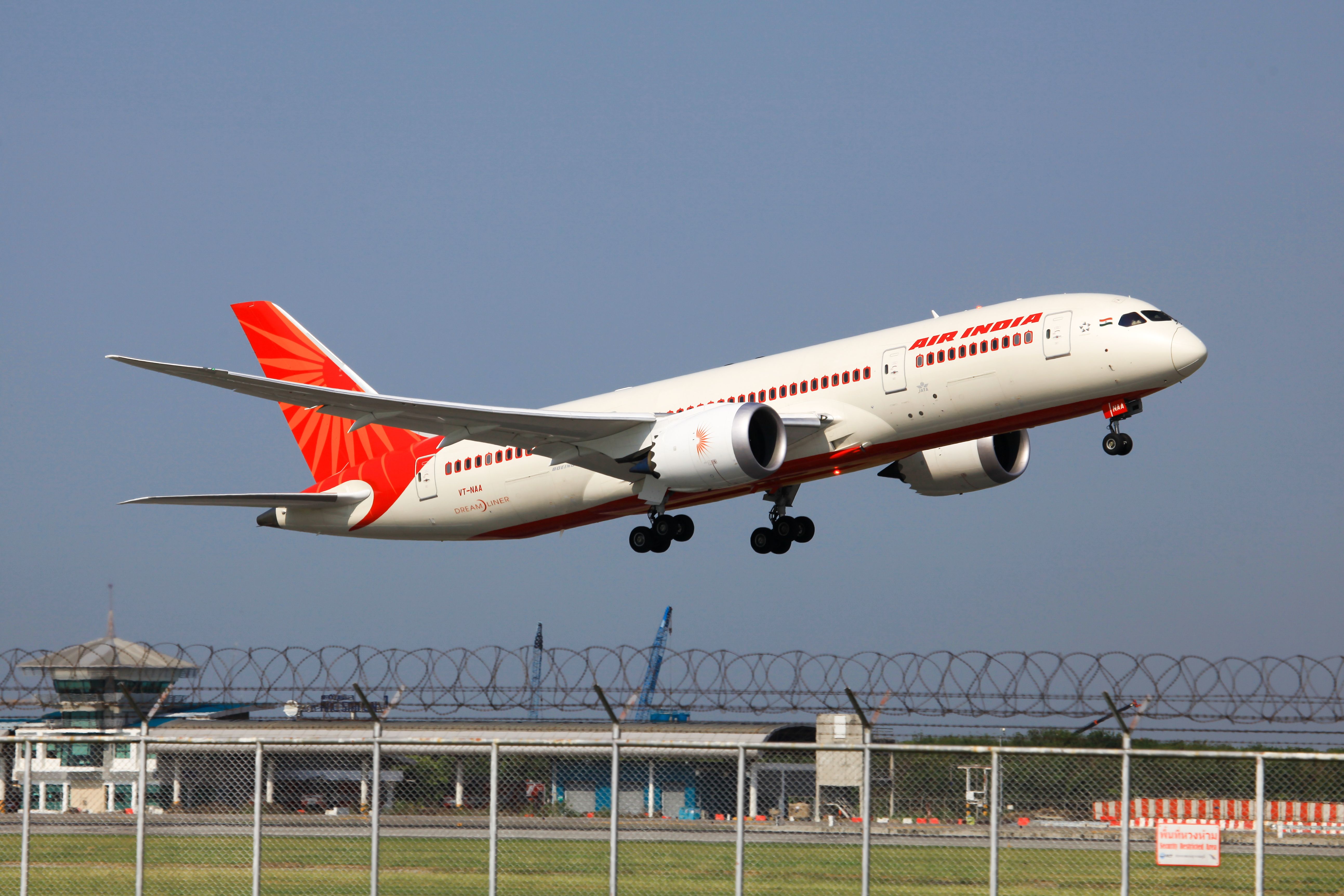Air India is the largest carrier on the air travel market connecting India to the United Kingdom. Nevertheless, British Airways and Virgin Atlantic are not far behind, and with maturing long-haul competition from India's low-cost specialist, IndiGo, it could be argued that Air India's position in the market is slowly being squeezed. Given how important the UK is to the airline's strategy, it won't let that happen.
Instead, it believes that continued expansion and route optimization efforts will allow it to maintain and even grow its position vis-à-vis competitors. These moves will be joined by its renewal program that envisions overhauls to the onboard soft and hard products, which Air India anticipates will propel it back to its now-distant position as a world-class airline. Future Expansion Air India's current route network to the UK is strong - but it believes it can go further.

Speaking to Rhys Jones from Head for Points , Air India CEO Campbell Wilson said: “We are only scratching the surface, really, of the opportunity that is present between the two countries, because at the moment, we only connect Delhi, Mumbai and Bangalore with Heathrow. We have a number of services into Gatwick from secondary cities, but you could probably double the number of city pairs that we operate . And that’s before you really consider the likes of Kolkata, Hyderabad, Chennai, Manchester, more into Birmingham.
There’s really a huge opportunity that we want to be able to attack and the constraining factor is access to aircraft.” Air India operates the following routes between India and the UK based on Cirium schedule data for this year. Services to Birmingham (BHX) are shown in yellow, those to London Gatwick (LGW) are in red, and flights to London Heathrow (LHR) are in green.
Looking more closely, the airline's routes to LHR are of particular importance. Routes with the highest demand and reputational importance (those connecting London with the larger cities in India) are directed to Heathrow. For more secondary cities, Gatwick is the primary gateway from London due to slot constraints that hinder Air India's ability to fly from the larger gateway.
Birmingham stands out as the airline's only destination in the North of England, catering to visiting friends and relatives (VFR) traffic that lives in the surrounding area. It is an important city for the carrier, and as per Wilson's comments above, it hopes to grow its network there further. Speaking to me earlier this week and reflecting on Air India's recent comments, aviation consultant Rishi Jain underlined why Birmingham is an ideal focus city for the company: You can't run a massive hub, a massive focus city abroad for Indians via a very pricey airport, because they want dirt-cheap tickets.
Birmingham emerges as an exciting possibility. Beyond that, Jain foresees additional growth beyond existing UK destinations, including into both London Stansted and Manchester. Around the UK, you could actually run non-stop flights to India thanks to VFR traffic from London, Heathrow, London, Gatwick, London, Stansted, Birmingham, and Manchester because you've got the onward connections now, on Indian carriers into Asia.
This is particularly advantageous thanks to Air India's lower cost base, especially relative to the powerful Gulf carriers. This could even mean flights to Nottingham and the East Midlands. "Indian airlines are cheap.
We have a cheaper cost base over the Gulf carriers in terms of wages. Indian carriers could harness the VFR to their advantage and launch even, I actually would even envisage, in about five years time, you're going to be talking about Nottingham and East Midlands, having a non-stop flight to India." UK Demand Wilson highlighted the importance of the UK within the Air India strategy, noting that flights on offer have increased considerably since the company was privatized in October 2021.
“The UK for historical reasons, the size of the diaspora, the size of the economic links, is clearly a strong number two, and we’ve put a lot of new capacity into the UK since privatisation – essentially doubled, if not slightly more." Indeed, looking at Cirium schedules data from both 2019 and 2025, flights per annum are up 90% while seats are up 105%. The table below details some of the key statistics related to Air India's UK operational performance last year, which explain its continued commitment and anticipated future growth.
Passenger numbers provided by the UK Civil Aviation Authority (CAA) do not provide statistics by airline but rather the overall total across all airlines on a given sector. As such, load factors for routes that have competition (the primary trunk services) is not available. Origin Destination Load factor Air India two-way seats (2024, rounded) Competition Notes Ahmedabad (AMD) LGW 92% 86,000 / Amritsar (ATQ) LGW 92% 80,000 / Bangalore (BLR) LGW 81% 26,000 / Cochin (COK) LGW 94% 80,000 / Suspended in March 2025.
Goa (GOX) LGW 80% 83,000 TUI Airways Amritsar (ATQ) BHX 87.5% 83,000 / Delhi (DEL) BHX 84.5% 80,000 / Mumbai (BOM) LHR / 460,000 Virgin Atlantic, British Airways, Air Canada Delhi (DEL) LHR / 534,000 Virgin Atlantic, British Airways, Air Canada Bangalore (BLR) LHR / 33,000 British Airways, Virgin Atlantic Most of these routes (with the notable exception of the BHX-DEL flight for example) focus primarily on point-to-point traffic, rather than passengers looking for onwards connections.
Load factors for the non-London Heathrow routes are a clear testament to Air India's ability to fill its planes. which is an important metric for any airline. That being said, load factors are just one indicator of commercial performance and should not be considered in isolation to determine whether a route is profitable or not.
In fact, despite reaching average loads of 94%, the London Gatwick to Cochin route was suspended at the end of March . Substantially higher per-trip costs, despite the load factors, mean lower yields and seemingly poorer performance. But for the other routes, Air India is seemingly happy with their performance.
With high load factors and potentially higher yields, the airline announced it would be expanding service this summer on several of these routes. This includes: Delhi to London Heathrow : frequency increase of three weekly flights, from 21 currently to 24 operated by both Airbus A350-900s and Boeing 787-9s. Amritsar to Birmingham : upping frequencies by one to reach four weekly services with the Boeing 787-8.
Amritsar to London Gatwick: upping frequencies by one as well, to reach four weekly with the Boeing 787-8. Ahmedabad to London Gatwick: the addition of two weekly frequencies for a total of five with the Boeing 787-8. Growing Competition Air India's growth being dependent on aircraft deliveries means its competition has a chance to develop in the meantime.
In particular, IndiGo's expansion plans on the long-haul front were initially based on its order for 30 Airbus A350-900s , signed last year. However, the carrier has decided to bring its long-haul expansion forward through a wet-lease agreement with Norse Atlantic Airways, announcing thrice-weekly flights from Delhi to both Amsterdam and Manchester starting this July. Jain says: They'll make a lot of money.
They've got a very good cost base, and they've got a very loyal flying market. And also, Indigo is doing it potentially, from a full-service point of view. There are a lot of people who fly via third-country airlines, who are so fed up with Air India because Air India did something to them 20 years ago.
So there are a lot of people who are flying BA-Virgin who don't want to; they're just flying because they've been bitten 10 times over by Air India. IndiGo will pose a threat to Air India, he believes. "It will be serious, strong competition, because Air India had a unique proposition [operating long-haul] which, under government ownership, they were not allowed to do properly, but are now able to harness it.
You've got IndiGo coming on top of them.".
Technology

Air India Wants To Double UK Flights But Is Constrained By Lack Of Aircraft

Air India's CEO Campbell Wilson has said that he would like to nearly double the carrier's existing UK operation but lacks the aircraft to do so.















